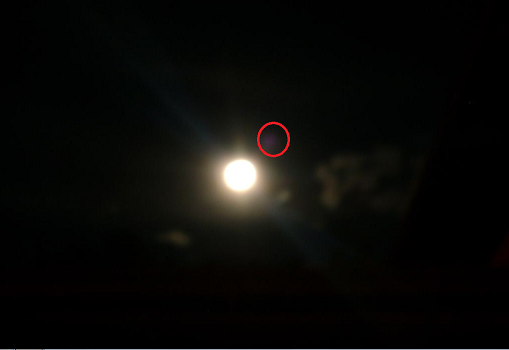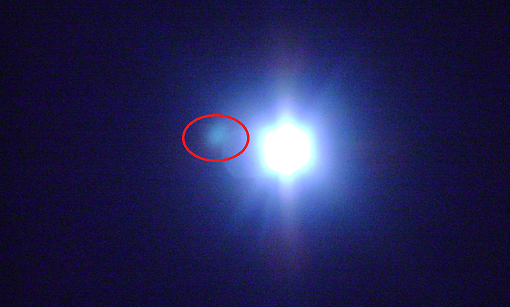



 |
 |
 |
 |
Provavelmente trata-se de algum efeito atmosférico. Quando existe muita humidade no ar ou cristais de gelo na atmosfera acontecem fenómenos parecidos. Em geral observamos um halo em torno da Lua. Este halo pode ser total (dar a volta completa à Lua) ou parcial dependendo das condições. A proximidade de luz artificial também influenciar o aspeto final. Para além disso também pode resultar de um efeito provocado pelo próprio equipamento utilizado. Pode resultar por exemplo da reflexão interna da luz. Note ainda que em todas as 3 fotos a Lua aparece saturada, ou seja temos imagens sobre-expostas da Lua. Numa imagem onde se conseguissem ver os detalhes da superfície lunar provavelmente o tal disco curioso não seria detetado. Note também que, por exemplo, na foto 1 aparecem diversas formações em torno da Lua e não apenas a assinalada com o disco vermelho. Eu apontaria para efeitos atmosféricos. Attached are some photos of the Moon, taken on 05/06/2012. Around the Moon, I noticed the presence of a circle that moved all the time. This circle appeared only when I photographed the moon with a mobile phone or digital camera, but never when the moon was observed with the naked eye. What was this strange circle, and why did it appear? This is probably an atmospheric effect. When there is a lot of humidity in the air or ice crystals in the atmosphere, similar phenomena occur. Normally, we observe a halo around the Moon. This halo can be total, meaning it circles the Moon completely, or partial, depending on the conditions. The proximity of artificial light also influences the final appearance. In addition, it can also result from an effect caused by the equipment used. It can result from internal reflection of light. Note as well that, in all 3 photos, the Moon appears saturated, that is, we have overexposed images of the Moon. In an image where the details of the lunar surface could be seen, this curious disk would probably not be detected. We highlight, for example, that, in photo 1, several formations appear around the Moon and not just the one marked with the red disk. I would guess atmospheric effects.